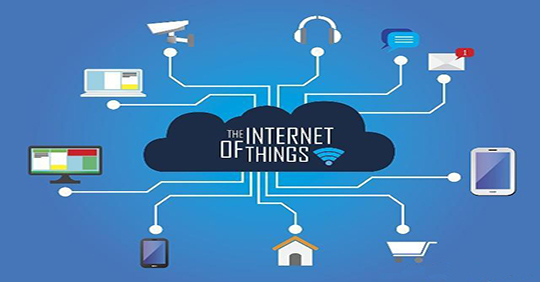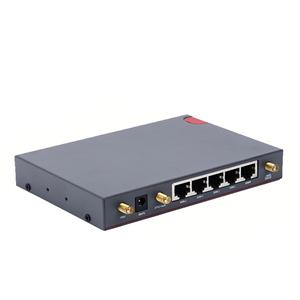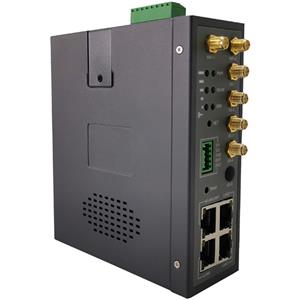The difference between IoT and IIoT
The difference between IoT and IIoT

IoT is full of acronyms, from LPWAN to MQTT to the acronym IoT itself. However, if this is not enough, we will have many changes in the Internet of Things! One of them is IIoT, which stands for Industrial Internet of Things. So what is the difference between IoT and IIoT?
"All over the world, if industrial productivity is increased by 1%, it can add 10 trillion to 15 trillion US dollars to global GDP in the next 15 years."-"Forbes" May Chunka
The difference between IoT and IIoT
In many examples and applications of the Internet of Things, we can see that the Internet of Things (IoT) adds value in three main areas: improving efficiency, improving health/safety, and creating a better experience. The Industrial Internet of Things (IIoT) involves the first two areas, namely improving efficiency and improving health/safety.
IIoT refers to the broader subcategory of the Internet of Things. The Internet of Things includes IIoT and asset tracking, remote monitoring, wearable devices, etc. IIoT is particularly focused on industrial applications, such as manufacturing or agriculture
The great potential of the Internet of Things
"The Internet of Things and the Industrial Internet will change many industries, including manufacturing, oil and gas, agriculture, mining, transportation, and healthcare. Overall, these account for nearly two-thirds of the world economy." World Economic Forum, Industrial Goods The networking report states
In recent years, innovations in hardware, connectivity, big data analysis, and machine learning have merged to bring huge opportunities to the industry. Hardware innovation means that sensors are cheaper, more powerful, and have longer battery life. Connectivity innovation means that it is cheaper and easier to send data from these sensors to the cloud. Big data analysis and machine learning innovation means that once sensor data is collected, it is possible to gain incredible insights into the manufacturing process.
These insights can lead to a significant increase in productivity and a significant reduction in costs. No matter what is being manufactured, it can be completed faster, with less resources and at lower cost
An example of the potential of IIoT is predictive maintenance. A machine damaged during the manufacturing process could mean millions of dollars in lost productivity, and production stopped to solve the problem.
The solution in the past was to schedule maintenance regularly, but this has some problems. What if the machine breaks down before maintenance? As mentioned above, this leads to a huge loss in productivity. What if the machine does not require maintenance? A waste of time, energy and money can be wasted elsewhere.
Predictive maintenance means using more sensors to collect better data on the machine, and then using data analysis and machine learning to determine when the machine needs maintenance. Coming too late will cause damage to the machine, and not too early will cause resource allocation errors
Predictive maintenance is just an example, this has become a reality.
As the adoption and development of IIoT accelerate, the changes will be profound. In the end, we can achieve an autonomous economy in which supply can fully meet demand, thereby completely optimizing the production process and achieving zero waste
And there are good reasons to believe that IIoT will accelerate its development in the near future...
Adopt Industrial Internet of Things
In many ways, IIoT is ahead of IoT and will continue to see faster adoption. why? The main difference between IoT and IIoT is that, unlike consumer IoT applications, the motivation for adopting IIoT technology is much greater:
"IoT and IIoT have two very different areas of focus. Industrial IoT connects key machines and sensors in high-risk industries such as aerospace, defense, healthcare, and energy. In these systems, failures often lead to life-threatening or other emergencies Situation. On the other hand, IoT systems are often consumer-level devices, such as wearable fitness tools, smart home thermometers and automatic pet feeders. They are both important and convenient, but failures will not immediately cause an emergency. More information All in the vibrating chain."—RTI
Another difference between IoT and IIoT is that compared with IoT, IIoT has more obvious near-term advantages. Manufacturing companies can reduce costs and increase productivity, which means a higher return on investment for adopting IIoT solutions.
However, the Internet of Things is not without its challenges...
Obstacles to the Internet of Things
Security and interoperability are the two biggest obstacles
Bringing physical systems online can bring huge benefits, but it also means that these systems may be threatened. When cyber attacks can remotely control or destroy physical systems, they can become scary. The best case is a huge financial loss, the worst case is a serious casualty. Generally speaking, security is the main concern of the Internet of Things. In the next few years, security will become an important content of the discussion. More information is available in the Zhengong Chain.
In order to collect data from sensors and make the data useful, everything in the system needs to work together. The lack of interoperability between IoT sensors, devices, connectivity and communication protocols and lack of standards may hinder the process of connecting everything. Usually, this is also a problem with the Internet of Things.
Consider the impact of IIoT
"In 1980, in China, 25 jobs were needed to create a manufacturing output value of 1 million U.S. dollars. Today, only 6.5 jobs can create this amount." As we enter the future and see the accelerated adoption of IIoT, The increase in productivity will be more pronounced. Tesla's Gigafactory will be highly automated, and promises that only 6,500 workers can achieve an amazing output value of $100 billion. That is only 1.3 jobs, which can create a manufacturing output value of 1 million US dollars.
So what does this mean for work in China?
On the positive side, this is likely to help bring manufacturing from abroad back to China. Because foreign labor is cheap, the manufacturing industry has moved to regions outside of China, but IIoT solutions will create machines and systems that are more powerful than this cheap manual labor.
The Internet of Things will also create new industries and job categories to support these high-tech systems. Medical robot designers, power grid modernization managers, intermodal transportation network engineers, etc.
However, we should beware that the work created may be less than the work destroyed. As shown above, increased productivity means less work is required to create the same value, and potentially means less work overall.
Even if there is no net job loss or even net job increase, we need to consider the types of jobs created and destroyed. New job categories will require interdisciplinary skills; in-depth knowledge of specific industries, as well as skills and expertise in new technologies, software, data analysis, system integration, and network security.
These jobs are not blue collars, and these skills will require high-level training and education. How to provide this kind of training and education? Who will pay? I don’t have the answer, but these questions are crucial as we enter the next industrial revolution.




